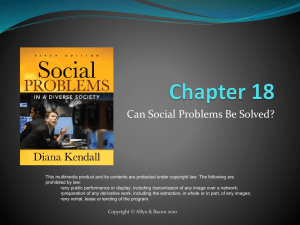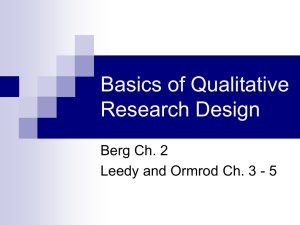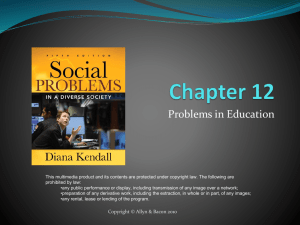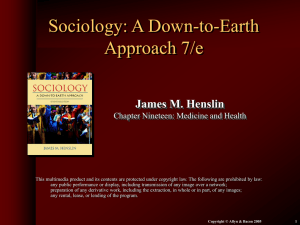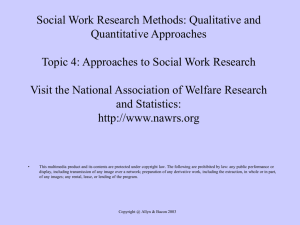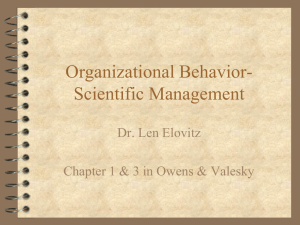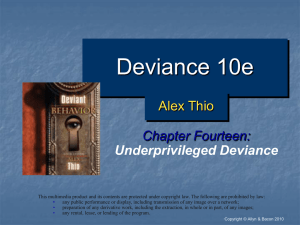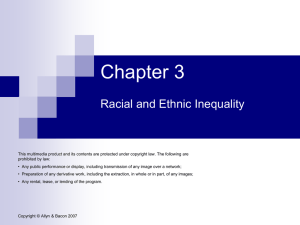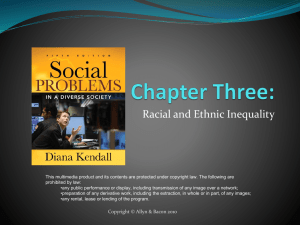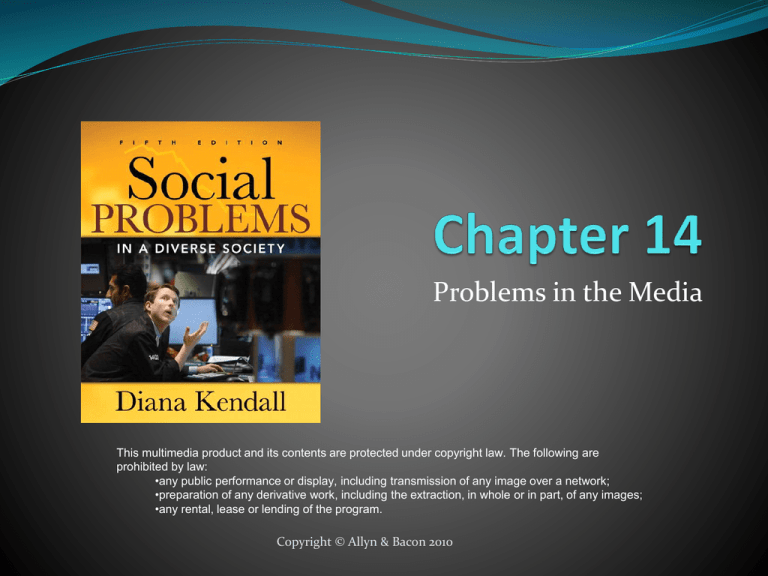
Problems in the Media
This multimedia product and its contents are protected under copyright law. The following are
prohibited by law:
•any public performance or display, including transmission of any image over a network;
•preparation of any derivative work, including the extraction, in whole or in part, of any images;
•any rental, lease or lending of the program.
Copyright © Allyn & Bacon 2010
Chapter outline
Media
Industries
Media
Effects
Sociological
Perspectives
• Media concentration
• Convergence
• Global Issues
• Violence
• Racial and Ethnic Stereotyping
• Gender Stereotyping
• Symbolic Interactionist
• Functionalist
• Conflict
Copyright © Allyn & Bacon 2010
Media Industries
Media industries are media businesses that influence
people and cultures worldwide
Media industries own interests in a variety of areas
Radio and television production and broadcasting
Motion pictures, movie theaters, and music companies
Newspaper, periodical, and book publishing
Internet services and content providers
Average person in U.S. spends more than ½ of their waking hours
in a media-related activity.
Copyright © Allyn & Bacon 2010
Copyright © Allyn & Bacon 2010
Technology and the media
Media became more influential as technology
changed.
Newspapers were traditional form of media but gave
way to:
Radio as the media phenomenon of the 1920s
Television as the phenomenon of the 1950s
Computers, fiber optic cable, and broadcast satellites
continue to change media today
Copyright © Allyn & Bacon 2010
Media Ownership and Control
Since the 1960s media ownership has become more
concentrated.
Today a few mega corporations own most media
businesses.
Some companies own more than one form of media.
Media concentration: tendency of media industries to
cluster together in groups with the goal of enhancing
profitability.
Copyright © Allyn & Bacon 2010
Media Concentration
Profit is the driving force in media concentration and
has lead to the following changes:
Concentration of ownership within one industry.
One company owns multiple newspapers
Cross-media ownership
Companies own more than one kind of media
Conglomerate ownership:
Corporation owns companies that operate in different
business sector.
Vertical Integration:
Company making the media also distributes it
Copyright © Allyn & Bacon 2010
Copyright © Allyn & Bacon 2010
Problems with Convergence
Supporters say:
Convergence is profitable for investors and media
executives
Critics believe:
Limits news and entertainment by reducing message pluralism
Decline of journalism as a public service profession
Constant pressure for journalistic endeavors to be profitable
Decrease in quantity and quality of international news available in
the U.S.
Quashing of public debate about power of media industries
Increase of D.C. lobbyists representing interests of media giants
Copyright © Allyn & Bacon 2010
Global Media Concentration
A few media giants control most of the world’s
information.
Time Warner, Sony, Viacom, Disney, NBC Universal, and
News Corporation
People in other nations criticize how media
conglomerates depict nations around the globe.
Such images (often negative) influence the politics
and cultures of other nations.
Fear of replacing others values with U.S. beliefs
Copyright © Allyn & Bacon 2010
Violence in the Media
Most scholars do not believe media causes aggressive behavior
A number of scholars assert that gratuitous violence is used to sell
media-related commodities
Violent television shows make up 60% of all television
programming
Some studies show a relationship between short-term aggressive
behavior and media depictions of violence
Other studies suggest media may prevent violence by providing
people with an emotional outlet (cathartic effect hypothesis)
Copyright © Allyn & Bacon 2010
Violence Against Women
Advertising often uses semi-pornographic images to
sell products
Bondage, sadomasochism, and the sexual exploitation of
children (Kilbourne 1999)
Contributes to the view of women as sex objects
Leads to gender inequality
Sex is used to sell products
Copyright © Allyn & Bacon 2010
Racial and Ethnic Stereotyping
Stereotype: Over-generalization about the characteristics of
a group
Media perpetuates racial stereotypes by:
Casting some groups as having superior traits
Exaggerating people’s physical appearance
Suggesting all people in a category look alike
Creating racial or ethnic characters who have undesirable
attributes
Linking subordinate racial or ethnic groups to illegal
actions
Copyright © Allyn & Bacon 2010
Racial and Ethnic Stereotyping, cont.
Why does it persist in the media?
Offensive material brings more media coverage and can
turn an average show into an overnight success.
Used for comic effect
Having characters with divergent attributes makes it
easier to create controversy.
Copyright © Allyn & Bacon 2010
Gender Stereotyping in the Media
Studies have found several gender stereotypes in the media
Introducing gender-specific age bias in casting
Older men and younger women are often shown together
Perpetuating traditional roles for women
Women as thin, only beautiful, and sexually passive
Impulsive conduct of professional women
Shown constantly shopping, drinking/smoking, bizarre
behavior
Women abusing power
Women overwhelmed by their work
Copyright © Allyn & Bacon 2010
Sociological Perspectives on Media
Interactionist:
Theory of limited effects
Media have a minimal effect on people’s attitudes and perceptions
Use and gratification theory
People are active participants and decide what they will watch, listen to,
read, or surf on the Internet
Social learning theory
People are likely to act out behavior from media sources
Audience relations approach
People interpret what they see and hear through cultural filters
Copyright © Allyn & Bacon 2010
Sociological Perspectives on Media, cont.
Functionalist:
Media fulfill several important functions in society
Providing news and information
Facilitating public discourse on social issues and policies
Passing on cultural traditions and historical perspective
Entertaining people
Confer status on individuals and organizations
Media is dysfunctional when they contribute to
reduction in social instability or weaken institutions
Copyright © Allyn & Bacon 2010
Sociological Perspectives on Media, cont.
Conflict:
Members of the capitalist class own and control the
media.
They use the media to validate existing class relations
Hegemony theory sees media as form of social control
used by ruling classes to create “false consciousness” in the
working classes
Media tells people what to think before people have had a
chance to think about an issue themselves
Copyright © Allyn & Bacon 2010




